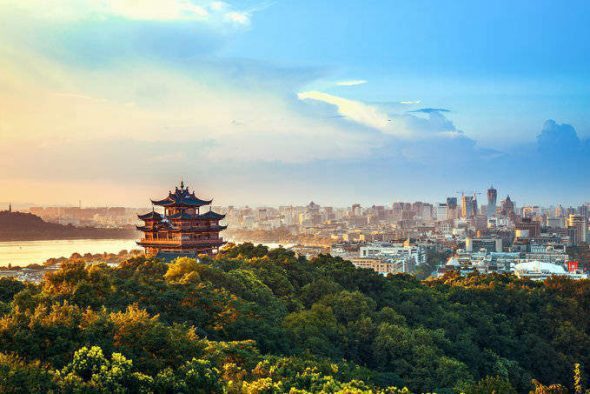Generators get around A$70-A$80/MWh in China
ANZAC day wasn’t a picnic for the ANZACs. In that spirit we’ve spent part of April 25 looking at the profitability of three of China’s largest generators.
These generators are of course very big. Even more than in Texas, big is a take-it-for-granted prefix in China. In this case it means big debts and big problems as well as big revenues. Note that what follows is a (very) brief desktop overview. No due diligence has been done, my last site visit to a China power plant was more than a decade ago.
The numbers I use come from English language translations of 2018 annual reports or in one case from a 20F statement. They do not even have the benefit of a results presentation, let alone of discussion with management. That said….
A summary of volume, price and fuel cost is shown below and for reference compared to Sunset Power’s results. Sunset owns 1.3 GW of generation capacity in NSW.

The three generators shown are about 13% of the China generation market by energy delivered. The Chinese generators mostly operate coal plant.
However, to a greater or lesser extent they also have some wind, solar or even gas. The companies also do some trading.
There is the odd offshore operation. Nevertheless the great bulk of the business remains coal fired electricity generation. Most of the generation is sold under one year contract to the National Grid company and the price is regulated. In this sense we can see Angus Taylor as similar to Xi Ping.
The coal cost is not regulated. So for investors this is the terrible situation where you have no control of either cost or price.
The table shows that not only is the price these generators receive similar to prices in Australia but the coal cost is actually higher. To be sure they report fuel cost, but there is very little gas generation.
I should note that for Sunset Power in Australia the $63 /MWh is not the pool price but their effective price allowing for their contract book. The pool price equivalent was A$79 MWh.
China has many businesses that have captive power plants and so don’t have to buy from the independent power producers [IPP] such as those listed above. But just as clearly lots of businesses do have to pay those prices.
Another thing to consider is that transmission costs in China on a $/MWh basis are likely to be far lower than in Australia, but I don’t have data on that.
The main point to me of the table above is that China is going to find it difficult to be globally competitive in energy intensive business if it has to pay A$70/MWh for power.
How do I know that? Well because every large business in Australia will tell you the same thing and they are often considering doing a wind or solar PPA to lower costs.
As I’ve alluded to previously the coal cost is high because imported coal sets the price in China. China’s coal production has been flat for years whereas electricity production kept growing.
The 769 TWh increase in generation requires roughly, roughly another 300 mt of coal so that’s enough to drive up global prices all by itself. Probably at least 30% of China’s coal plants are relatively, highly efficient and that may not do much for global carbon emissions but it does mean they like good quality (read expensive) coal.
These companies don’t make any money and are heavily indebted
In China it doesn’t matter if you don’t make money and have lots of debt because the Chinese Govt will always bail you out. Apparently. That’s just as well in the case of these companies.
The table below are some ratios I’ve estimated from the 2018 accounts as presented.
The accounts are rarely the only story to be told. Just as well I say because the numbers don’t tell a great story:

In Australia historically net debt:ebitda > 8 was a death sentence. For a utility I’d typically be looking for something around say 3X or 4X if contracted long term.
However interest rates are much lower than historically and so companies can manage more debt even if they can’t pay it off. Return on equity is hopeless.
AGL’s return on equity is about 13% at the moment and in China 10 year bonds are at 3.4%. If we say the market equity risk premium is 6% and guesstimate an equity beta of say 0.7, the target return on equity is about 8.5%
Q1 2019 indicators are unpromising
Huaneng as its listed at least in HK released some March quarter figures earlier this month. Generation sold was flat. The electricity price received in China was 421 RMB (A$ 88 MWh). Thermal power generation lost market share in China
A ten year history of the share price shows that investors aren’t that convinced:

China’s thermal electricity problem is more coal generation means higher electricity prices. The same problem every coal consumer faces
In this analyst’s view China’s big utilities are part of a bigger problem. China can’t keep growing its construction and heavy industries. That’s too big a debate for this space so restricting it to these utilities the bind is:
- If thermal power generation keeps growing coal prices will stay high and indeed increase unless China expands its own coal industry and probably even if it does;If coal prices stay high either electricity tariffs will have to be lifted, in which case the big consumers of power will also become less profitable; or the companies will have to continue to be subsidized by the Chinese Govt in the form of implicit debt or equity support.
Capacity utilitzation at say 55% max and on average close to 50% and probably falling is a waste of capital. Historically China has run low capacity utilization because there was little or no gas and only limited hydro to do shoulder and peak loads. Also the low capacity utilization was OK if you have a view that demand growth will take care of it.
Electricity demand in China is going to keep growing. So even if you put the environment to one side there is a straight economic problem of either forcing global coal prices up even higher or producing more of the electricity from lower cost sources. In this case that means wind and solar the same as the rest of the world.
The past decade has shown that big changes can happen both faster and slower than expected. Massive growth in global wind and solar generation is yet to meaningfully impact China’s big business and household sectors even though China is a world leader in the wind and solar industries.
At the same time China’s scale means that everything it does is amplified through global markets. The growth in coal fired electricity cant be sustained most likely because the rest of the world is increasingly unwilling to supply the required quantity of coal at the required cost.
Yet this big shift happens only slowly and wouldn’t matter if the numbers in China weren’t so large. Despite what the global coal lobby says its not easy to produce another 300 mt of high quality coal per year. Adani is only one of many examples. Perhaps more likely is that China will grow its own coal output. Perhaps.
OK, it’s finally time to talk carbon
On top of the fundamental economic issues the China coal generation sector faces there is also the carbon emissions problem.
The companies mentioned above have done quite a bit to fix up their sox and nox emissions. That leaves the bigger long term problem of CO2.
Solar and wind subsidies in China have been heavily reduced.
Howeve,r China has had 7 regional pilot carbon pricing markets running since 2014. Prices in the pilot markets have stabilized at 38 RMB (around A$8 MWh) according to this good article by Huw Slater. The power sector could be ready to start its ETS fully by 2020.
The bad news only 22% of power sector respondents believed they would need to buy permits, as free allocations cover the rest.
Over the next 2-4 years its hard to see this scheme as materially impacting prices or profits of the IPP sector. However, depending on how seriously the medium term targets are taken and how tough they are it might impact investment decisions even in that time frame.












